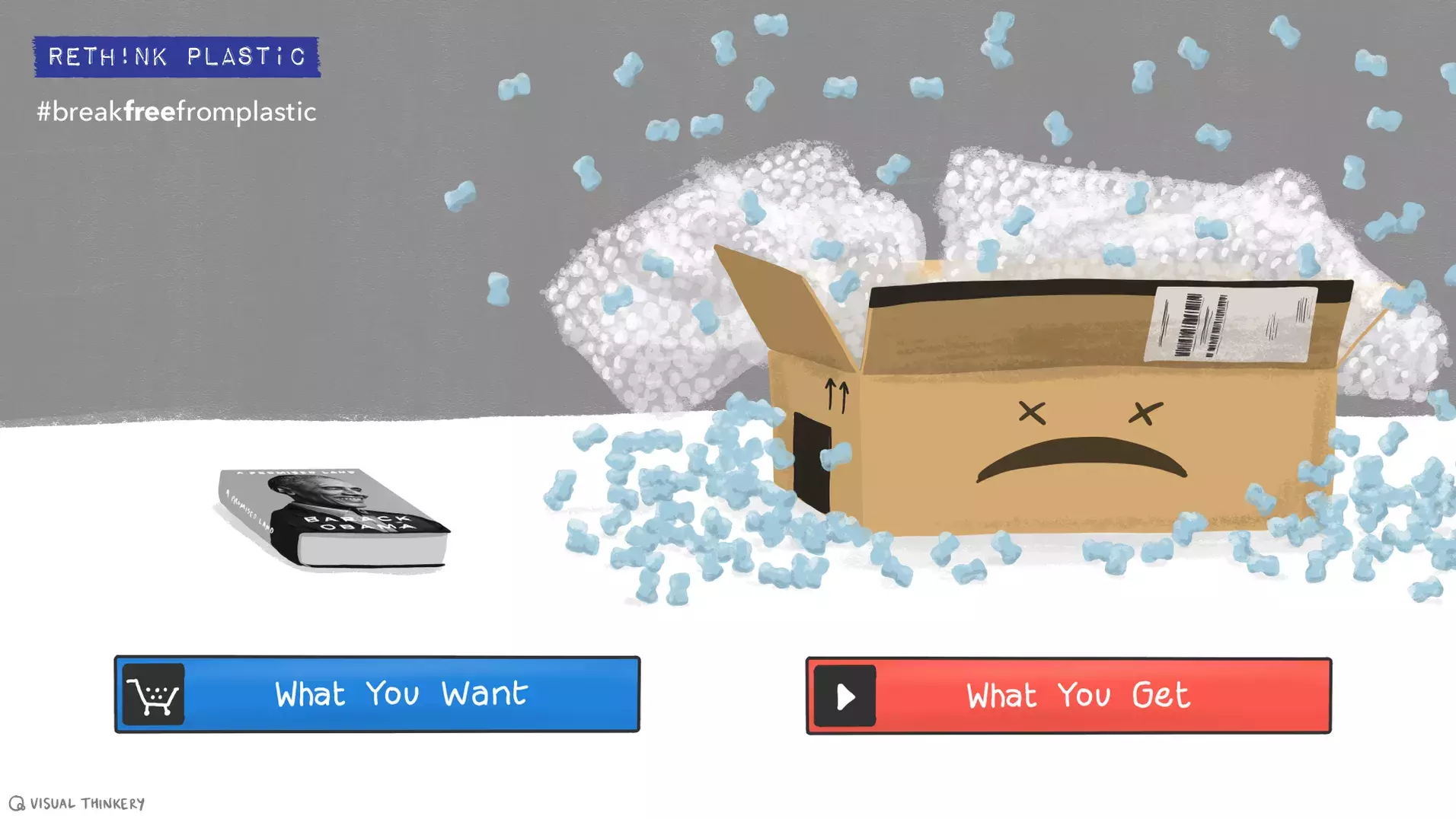Reuse and recycle by default – New EU packaging rules must end single-use
On 30 November, as part of its Circular Economy Action Plan, the European Commission will take a step towards improving the sustainability of packaging and wider product distribution systems – or not.

The amount of packaging waste we produce has increased dramatically in the last decade. Sadly, so far, waste prevention measures adopted by EU countries have not delivered on their targets. In 2020, every European citizen produced a staggering 177 kg of packaging waste (up by 18% from 2009) according to Eurostat.
The simple truth is, we use more and more packaging – and recycling is just not enough. The EU – and governments globally – must adopt rules to avoid the use of unnecessary packaging (the so-called ‘packaging-free models’), tackle overpackaging , which is often related to marketing more than product protection, support reuse and refill, and, finally, make sure all packaging is recycled.
With the new Packaging and Packaging Waste Regulation (PPWR), the EU can take a step in that direction. For it to be a true step forward, the regulation must include:
Effective measures to reduce the use of packaging
As it is, we are drowning in plastic waste – which is why the EU should set ambitious packaging waste prevention targets. Rules should clearly state we must tackle the ever-increasing single-use packaging – and establish a detailed list of types of single-use items that should not be allowed.
For example, single-use cups, bags and boxes should not be allowed in cafés and restaurants, and single-use sugar sachets and milk sticks should also become a thing of the past.
Promoting the reuse of packaging
EU rules should allow Member States to realise the full potential of the ecological benefits brought by well-designed reuse systems. Measures should target all market segments, such as transport packaging (including e-commerce), take-away food and drinks in restaurants and catering, as well as the retail and beverage industries.
Whether national, regional or local initiatives, EU rules must be able to support them and lead the way towards reuse.
Robust conditions for recycling
First, we ensure that waste is avoided – the most sustainable plastic packaging is the one that has not been produced. Then, we make sure reuse becomes the new normal. But what happens at the end of the (long) packaging life?
The Commission must propose measures to ensure that all packaging on the market in 2030 is recyclable – and actually recycled at scale. This should include a categorisation of packaging according to recyclability in order to modulate fees that packaging producers have to pay to comply with extended producer responsibility obligations; restrictions for packaging not recycled at scale; and new deposit return schemes for single-use plastic beverage bottles, and metal beverage containers.
New and updated standards
All regulation must be underpinned by environmentally robust standards. The European Commission must ensure that the European standardisers CEN-CENLEC develop standards defining reusable packaging formats, including requirements on hygiene or a minimum number of number packaging should be reused.
With the right framework conditions, the EU can decouple economic development from the use of natural resources, contribute to the reduction of carbon emissions and halt biodiversity loss. Ensuring that all packaging is reusable and, at the very end of its life, recyclable, would be a step in the right direction. We have a window of opportunity – let’s not allow it to go to… waste.

 By
By  By
By  By
By 
